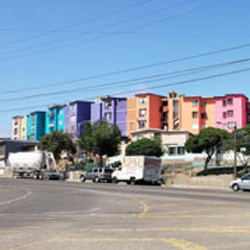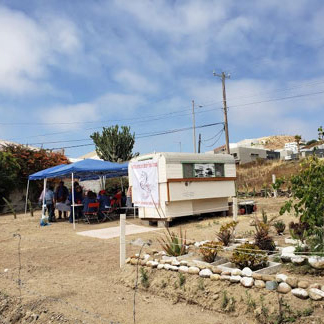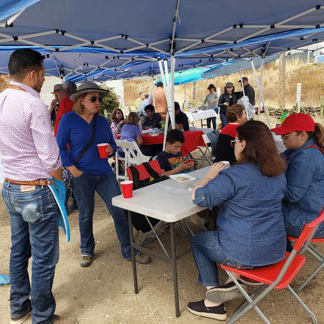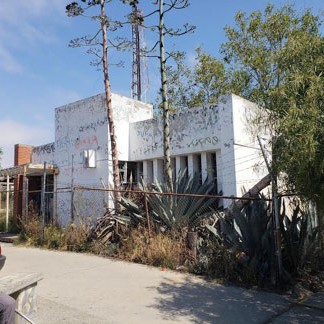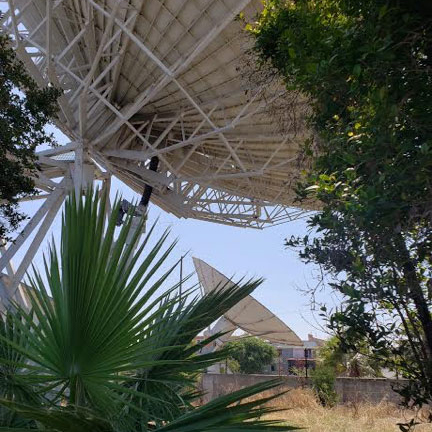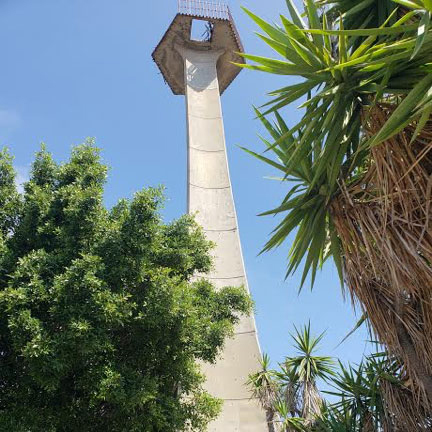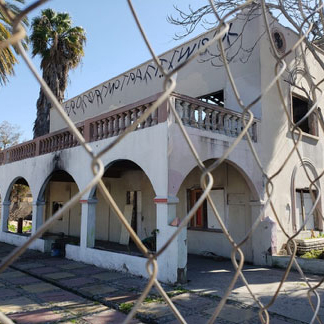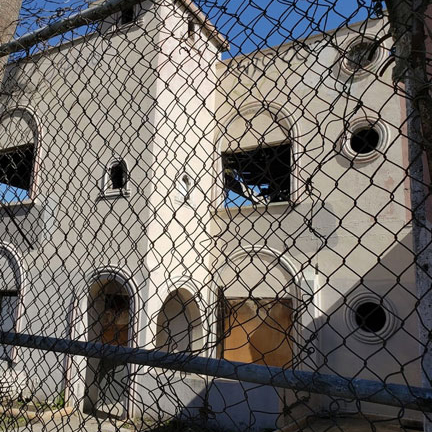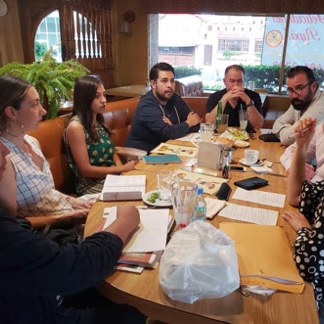|
Will Politicians Support Tijuana Preservationists?
By Maria E Curry
July/August 2019
On June 2, Baja California elected a new governor and 5 municipal presidents (mayors), all from the same leftist political party that won the presidency last year and has promised to transform the nation. The federal government plans to invest millions of pesos in urban development for tourist and marginalized high-crime areas in Baja California and elsewhere. Preservationists are actively organizing to propose projects to newly elected officials including the "Red de Preservación del Patrimonio Cultural" (a network of preservationists) and the Coronado section of "Unión de Vecinos de Playas de Tijuana" (an organized group of Playas de Tijuana residents).
The groups are discussing and promoting several proposals to elected officials. Here are some highlights:
Creating a cultural area by converting vacant facilities into new museum, community center, and park on a block now smothered by semi-abandoned telecommunications structures. The "Infonavit Lomas del Porvenir" neighborhood is a high-crime area with many homeless people and drug addicts. The buildings include a Modern style, abandoned post office from the late 1960s, two defunct television station antennas, two telegraph towers and a telegraph building still in use. Abandoned gardens full of trash and overgrown vegetation surround these structures.
This proposal is in the early stages, led by a resident with a sociology degree and her historian son. The complex is federal property and could be donated to the community. There is great potential for revitalization using historic preservation as a tool. This block would require little investment, since the structures, although deteriorated, have retained much of their historic integrity. Lomas del Porvenir was the first neighborhood in Mexico to build apartments for low-income people in the 1970s through a government program known as INFONAVIT. These apartment buildings could be designated part of Baja California's cultural heritage, adding value to a neglected urban area. Last year, a residents group used grant money to paint the apartments in vibrant colors. Their donated labor and materials showed the potential for area improvements at little cost.
Building a park would help preserve the character of Playas de Tijuana, a middle-class, oceanfront neighborhood terminated by the U.S. border fence. The "Unión de Vecinos" wants to stop the opening of a new street through a state-owned lot to access the Tijuana-Ensenada toll road and surrounding neighborhoods.
If this street were to open, it would destroy the beauty, peace, and essence of the 1950's community. Residents and tourists alike would no longer be able to enjoy this semi-secluded area that offers Tijuana's only beach and bullring. Instead, Playas residents have staked their claim on the lot for a park by planting trees and organizing picnics. They are consulting lawyers and a caretaker is on-site 24 hours a day.
Other projects the "Red de Preservación" group have initiated include devising preservation action plans for buildings threatened with demolition; declaring the old downtown post office a cultural resource with potential for adaptive use; and undertaking preservation education.
Preservationists are currently focused on two threatened historic resources. One is the 1930s ramp to the old Agua Caliente resort, built after the casino closed. The ramp is now a pedestrian street used by 5,000 students from five schools. The owner of a new high-rise building plans to usurp the ramp for an entrance to 25 just-completed condos. A coalition of groups is waging a legal battle to stop this.
The other property is threatened by demolition by neglect: a Modern house on old Avenida Revolución that seems inspired by Irving Gill's architecture. Because the house has become a haven for drug addicts, preservationists fear that local officials could cite its deterioration to support demolition.
With knowledge, grit, and persuasion, grassroots organizing can solve many urban problems. Preservationists in Tijuana feel confident that if Mexico's new political agenda, which includes improving life in cities and towns, is backed by informed public participation, the country's cultural heritage is bound to be better respected and protected.
|
2025
2024
2023
2022
2021
2020
2019
2018
2017
2016
2015
|

